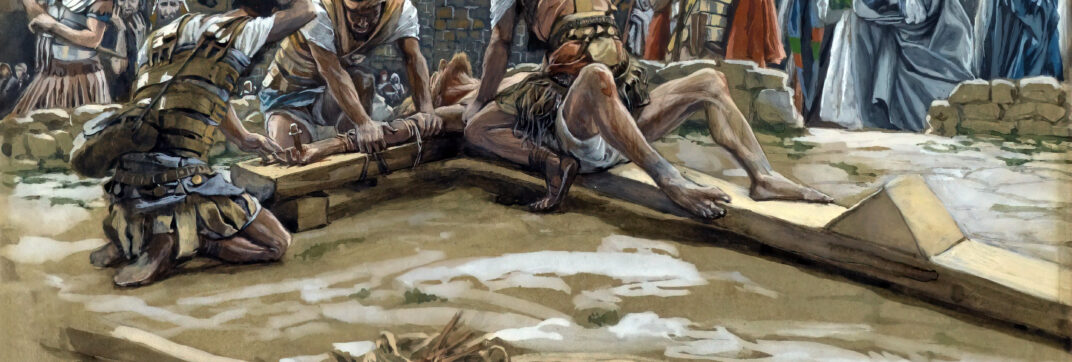I come from a family of museum-goers and art lovers. My mother created art in acrylics and stained glass. She also shared her love of art with my sister and I. We watched Sister Wendy’s journey through art on PBS and went to the Cleveland Institute of Art to take classes as part of our homeschool education in high school. Because of this, many classic pieces of Christian art are already familiar to me. But not James Tissot’s (1836 – 1902) Christian art. I knew some of his other more famous pieces like Seaside and Holiday.



For most of his life, Tissot lives la vie de l’art: painting beautiful women and making mistresses of his models. Wikipedia outlines his conversion/reversion to Catholicism late in life and focus on capturing the life of Jesus in gouache:
After completing the Woman of Paris in 1885 Tissot experienced a religious vision at the Church of St. Sulpice, leading him to revive his Catholic faith and spend the remainder of his life making paintings about biblical events.[38] Moving away from the Impressionists’ and Post-Impressionists’ intent to create art that reflected a changing, modern world,[39] Tissot returned to traditional, representational styles and narratives in his watercolors. As part of this artistic effort Tissot traveled to the Middle East in 1886, 1889, and 1896 to make studies of its landscapes and cultures, which would come to distinguish his series from contemporary Biblical art through its “considerable archaeological exactitude”[38] in striving for accuracy rather than religious emotion.[12] His series of 365 gouache illustrations showing the life of Christ were shown to critical acclaim and enthusiastic audiences in Paris (1894–1895), London (1896) and New York (1898–1899), before being bought by the Brooklyn Museum in 1900.[38] They were published in a French edition in 1896–1897 and in an English one in 1897–1898, bringing Tissot vast wealth and fame. During July 1894, Tissot was awarded the Legion of Honour, France’s most prestigious medal.[1]
Tissot spent the last years of his life working on paintings of subjects from the Old Testament.[40] Although he never completed the series, he exhibited 80 of these paintings in Paris in 1901 and engravings after them were published in 1904.[11]
https://en.wikipedia.org/wiki/James_Tissot
This blog post discusses his vision and conversion a little, but I’d so love to read a biography about him.
For this post, I wanted to examine one of his paintings. With 365 paintings in his series on the life of Jesus, there are many potential paintings to discuss. Let’s start with what I think is one of the most challenging: The First Nail (Le Premier Clou, 1886).

Even though he strove for accuracy over emotion, the piece is incredibly emotional. The way it takes two men to hold Jesus down and the way one man sits on him in such a dominating way. It is so cruel, so inhuman. He looks like a monster, with no emotion in his face. All the men doing the bloody work of crucifixion are so casual about their brutality.

The soldiers look on with detached, professional interest:


The three Marys and St. John the Evangelist are grouped at the top righthand of the painting. Only The Blessed Mother Mary and St. John fully look at what is happening as John supports Mother Mary in her profound grief. Both Mary Magdalene and Mary the wife of Clopas shield their eyes to the savagery scene before them.
To the left, just over the soldier’s shoulder, two men also watch the scene unfold. One has a look of horror while the other is difficult to read. His deep shadowed eyes look sad, but also something else I can’t define. I wonder if he represents the author who watches the scene and does nothing. The man on the left’s hands grasp at his face but where are the man on the right’s hands- empty, doing nothing, helping no one?
The First Nail is currently housed at the Brooklyn Museum of Art but sadly it is not on display. The actual painting is quite small- just 7.8 x 12.7 in. What incredible detail Tissot captured on such a small canvas.
I don’t want to say this is my favorite painting in Tissot’s series on Jesus. In truth, I don’t like looking at it because it makes me so sad to see Jesus brutalized in this way. But I think it is important because here in the depth of cruelty, in the absolute worst of us… here is the height of His love.

If you want to see more of Tissot’s paintings about the life of Jesus, you can buy this hardcover art book for $300. Or you can buy a Kindle version for $3.


Recent Comments